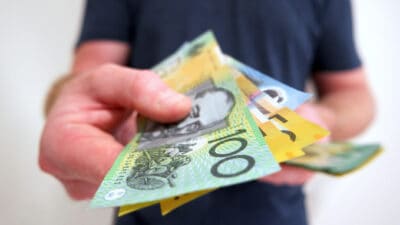The Rio Tinto Limited (ASX: RIO) share price will be one to watch closely on Thursday.
This afternoon the mining giant released its full year results after the market close.
How did Rio Tinto perform in FY 2020?
For the 12 months ended 31 December, Rio Tinto reported a 3% increase in sales revenue to US$44,611 million. This was driven entirely by its iron ore operations, which offset lower revenues across other key commodities.
Iron ore revenue came in 13.4% higher year on year at US$29,202 million. Whereas Aluminium, Alumina, and Bauxite revenue fell 10% to US$9,146 million, Copper revenue dropped 11.8% to US$1,785 million, and Industrial minerals revenue fell 8.4% to US$2,051 million.
Positively, margin expansion led to the mining giant reporting a 13% increase in underlying earnings before interest, tax, depreciation and amortisation (EBITDA) to US$23,902 million. And on the bottom line, net earnings were 22% higher year on year at US$9,769 million.
Bumper dividends
Rio Tinto's free cash flow came in 3% higher than in FY 2020 at US$9,407 million. This followed a 13% increase in capital expenditure to US$6,189 million.
This led to the Rio Tinto board declaring a fully franked final dividend of US$4.02 (A$5.19) per share. This comprises an ordinary dividend of US$3.09 (A$3.99) per share and a special dividend of 93 U.S. cents (A$1.20) per share.
Combined with its interim dividend, Rio Tinto is rewarding shareholders with a fully franked full year dividend of US$5.57 per share (A$7.19). That's the equivalent of a 5.6% yield and will mean a total of US$9 billion is returned to shareholders in FY 2020.
Management commentary
Rio Tinto's new Chief Executive, Jakob Stausholm, was pleased with the company's performance in FY 2020. Though, he conceded that the Juukan Gorge controversy will rightfully overshadow this.
He said: "It has been an extraordinary year – our successful response to the COVID-19 pandemic and strong safety performance were overshadowed by the tragic events at the Juukan Gorge, which should never have happened."
"During 2020, the agility and resilience of the business and our employees, coupled with strong commodity prices, enabled us to deliver underlying EBITDA of $23.9 billion and Return on Capital Employed of 27%. As a result, the Board has approved a total dividend of 557 US cents per share including a special dividend of 93 US cents per share, representing a 72% full year pay-out ratio, which builds on our five-year pay-out track record."
"My new executive team and wider leadership of the company are all committed to unleashing Rio Tinto's full potential. We will increase our focus on operational excellence and project development and strengthen our ESG credentials. Working closely with the Board, we must earn the right to become a trusted partner for Traditional Owners, host communities, governments and other stakeholders but we all recognise that this will require sustained and consistent effort."
"Safe and well-run operations, together with world-class assets, great people, capital discipline and a strong balance sheet, leave Rio Tinto well placed to generate superior returns for shareholders, invest in sustaining and growing our portfolio, and make a broader contribution to society," he concluded.
Guidance
Rio Tinto expects its capital expenditure to be around US$7.5 billion in each of 2021 and 2022. This compares to previous guidance of ~ US$7 billion in each year. FY 2023 capital expenditure is included for the first time and is also expected to be around US$7.5 billion.
Each year includes sustaining capex of US$3 billion to US$3.5 billion, of which US$1.2 billion to US$1.6 billion is for Pilbara iron ore.
Management advised that the $0.5 billion increase in FY 2021 and FY 2022 from previous guidance is due to the Australian dollar, which is forecast to strengthen from 69 U.S. cents to 77 U.S. cents.
The stronger Australian dollar is also expected to lead to an increase in Pilbara iron ore unit cash costs. In FY 2021 it expects these costs to be between US$16.70 to US17.70 per tonne. This compares to US$15.40 in FY 2020.
Positively, FY 2021 Copper costs are expected to benefit from a gradual return to higher copper grades at Kennecott and a one-off benefit from higher gold grades at Oyu Tolgoi.
All production guidance remains unchanged for the year ahead.









